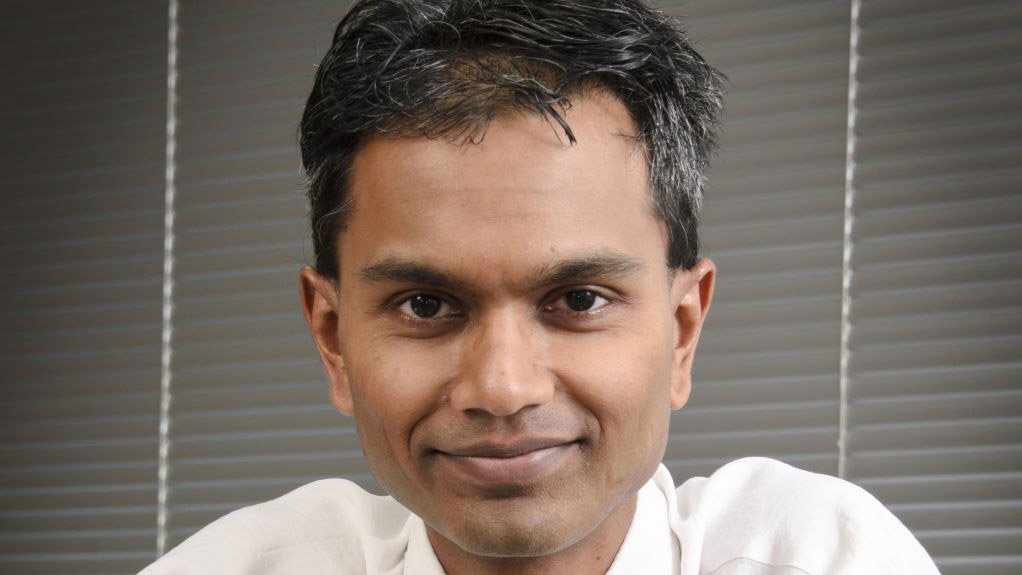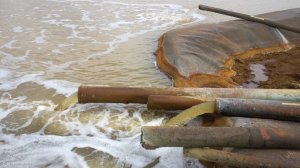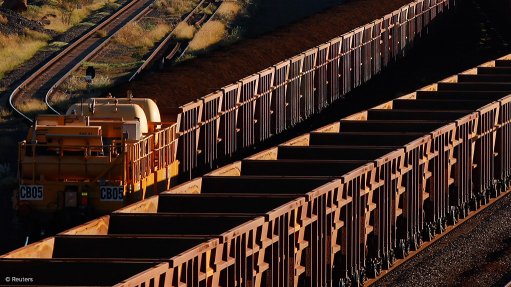More to mining’s water challenge than AMD




REPRESSED FOCUS Acid mine drainage has monopolised the industry’s focus because of its environmental impact
Photo by Megan van Wyngaardt
VITAL RESOURCE Slurry processing depends on water, without which a mining project cannot function
Photo by Bloomberg
SANTOSH GUNPATH The mining industry needs to focus on the development of technologies that will reduce the reliance on water-intensive processes
With a range of water management challenges affecting the mining sector globally, industry needs to innovate solutions beyond its current focus on the treatment of acid mine drainage (AMD), says independent process industry consultant and chemical engineer Santosh Gunpath.
He notes that, during the past decade, the focus has been on the treatment of AMD, which is caused when water flows over from processing or through sulphur-bearing materials forming solutions of net acidity.
Originating from prior metal or coal operations, AMD is environmentally hazardous, as this sulphide leaching causes groundwater to become acidic by forming sulphuric acid. AMD has monopolised the industry’s focus because of its environmental impact and the need to mitigate the obvious danger this poses to surrounding communities, says Gunpath. This is reflected in the Department of Water and Sanitation’s launch of a R12-billion AMD solution project last year.
However, this monopolisation has come at the expense of other water management challenges, and Gunpath, therefore, stresses that AMD is not the sole water management problem that the mining industry faces.
Water availability is a major constraint for mines and a multifaceted problem, the solution of which constitutes, among others, recycling, he adds. This involves improving the maximum amount of water returned from the thickening circuit or process water dam to the processing plant; the availability of a primary water source, which is predicated on there being a water source close to mines’ processing plants; and weighing the costs involved – the piping, pumping, and mechanical and civil infrastructure related to the wet mining process.
While Gunpath does concede the cost element of recycling water, it is not as high when compared with, for example, other costs incurred when operating a mine and processing plant. All cost-saving opportunities should be considered, especially in current economic times, he says.
Gunpath notes the difficulty of obtaining a water use licence as another problem for the global mining industry, stressing that this problem has been greatly underestimated and that these difficulties should not be as acute, as the functioning of an entire mining or processing operation is dependent on the availability of water.
He explains that slurry processing, which is the backbone of existing minerals technology, cannot take place without water; therefore, without a water use licence, a project would be ‘dead in the water’.
“Without the necessary licence, a world-class deposit remains dirt in the ground, which could otherwise be developed to contribute to the gross domestic product (GDP) and, specifically, for a job-challenged South Africa, positively affect the all-important GDP per capita.”
In his scope of work, Gunpath has experience in working with mine owners faced with difficulties in processing owing to problems in sourcing the requisite amount of water to run their projects at the desired capacity. He indicates that, more often than not, this is because of problems in obtaining a water use licence and that the issue of obtaining such a licence also affects the asset (mine and mineral deposit) owners, as they are unable to sell to a willing buyer.
Spearheading Solutions
Gunpath believes that the industry should move away from its predilection for blaming government for such woes and take the initiative to use this as an opportunity to innovate. This, he says, entails focusing on the development of technologies that will reduce the reliance on water-intensive processes used in the mining of coal, base metals and precious metals, among other commodities.
He believes that renewable energy, in conjunction with the fourth Industrial revolution, or Industry 4.0, will usher in a viable, cost-effective and low-risk solution that will sustain mining over the course of the next decade. Industry 4.0 refers to the digital revolution prevalent since the middle of last century and is the current trend of automation and data exchange in manufacturing technologies, inclusive of cyberphysical systems, the Internet of Things and cloud computing. It is characterised by a fusion of technologies that is blurring the lines between the physical, digital and biological spheres.
While Gunpath acknowledges that there are original- equipment manufacturers (OEMs) offering various technologies aimed at addressing water manage- ment challenges, many of these offerings are uncoordinated. Further, owing to their novel designs and often unproven nature, investment in these technologies is perceived as risky and, as such, is not adopted easily.
To circumvent this perception, Gunpath says, a central focus is required that combines input from technologists, designers, OEMs, government and asset owners.
He notes that, while the implementation of such a solution, funding and return on investment are all demanding elements, it is a worthwhile undertaking, as the industry needs to move in this direction to remain sustainable
Comments
Press Office
Announcements
What's On
Subscribe to improve your user experience...
Option 1 (equivalent of R125 a month):
Receive a weekly copy of Creamer Media's Engineering News & Mining Weekly magazine
(print copy for those in South Africa and e-magazine for those outside of South Africa)
Receive daily email newsletters
Access to full search results
Access archive of magazine back copies
Access to Projects in Progress
Access to ONE Research Report of your choice in PDF format
Option 2 (equivalent of R375 a month):
All benefits from Option 1
PLUS
Access to Creamer Media's Research Channel Africa for ALL Research Reports, in PDF format, on various industrial and mining sectors
including Electricity; Water; Energy Transition; Hydrogen; Roads, Rail and Ports; Coal; Gold; Platinum; Battery Metals; etc.
Already a subscriber?
Forgotten your password?
Receive weekly copy of Creamer Media's Engineering News & Mining Weekly magazine (print copy for those in South Africa and e-magazine for those outside of South Africa)
➕
Recieve daily email newsletters
➕
Access to full search results
➕
Access archive of magazine back copies
➕
Access to Projects in Progress
➕
Access to ONE Research Report of your choice in PDF format
RESEARCH CHANNEL AFRICA
R4500 (equivalent of R375 a month)
SUBSCRIBEAll benefits from Option 1
➕
Access to Creamer Media's Research Channel Africa for ALL Research Reports on various industrial and mining sectors, in PDF format, including on:
Electricity
➕
Water
➕
Energy Transition
➕
Hydrogen
➕
Roads, Rail and Ports
➕
Coal
➕
Gold
➕
Platinum
➕
Battery Metals
➕
etc.
Receive all benefits from Option 1 or Option 2 delivered to numerous people at your company
➕
Multiple User names and Passwords for simultaneous log-ins
➕
Intranet integration access to all in your organisation





















